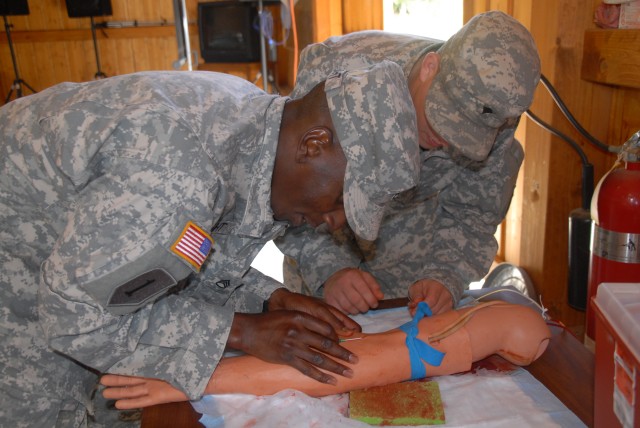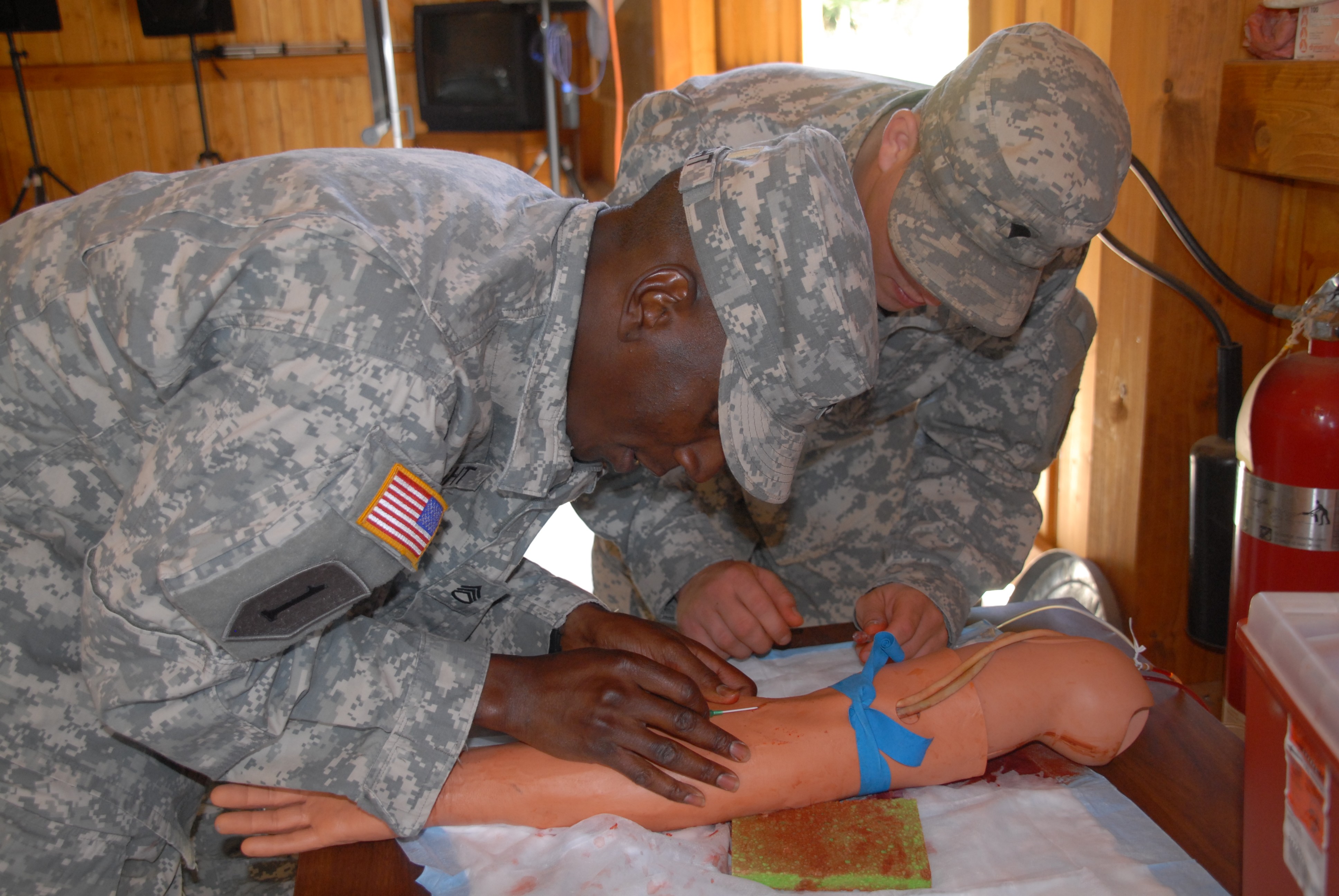Fourteen Soldiers are ambushed upon entering a small building.
In a room filled with smoke, the sounds of gunfire, explosions and screams of agony, the Soldiers find several casualties with a multitude of injuries. The Soldiers treat the wounded.
The "ambush" was simulated, but the training offered by the cadre of the 7th U.S. Army Joint Multinational Training Command in Germany is real.
The command supports training exercises for U.S. and coalition units deploying throughout the European Command and Central Command areas of responsibility. NATO forces and allied countries, such as Poland, Russia, the Czech Republic, Bulgaria, Romania and North Africa, also train at its ranges and facilities.
The JMTC's state-of-the-art Medical Simulation Training Center is designed to help Soldiers complete Combat Medic Advanced Skills and Combat Life Saver training. The training focuses on the three most common causes of death in combat: hemorrhages, blocked airways and collapsed lungs.
"We train our students to save lives in combat," said Sgt. 1st Class Humberto Figueroa, MSTC course manager. The course ensures all students receive hands-on tactical and technical combat medical training to save lives during small-unit operations in close combat.
"We encourage Soldiers to respond and treat casualties within minutes of the "golden hour," said Figueroa. The golden hour is the first 60 minutes after the occurrence of multi-system trauma, and Figueroa added, victims' chances of survival are better if they receive care within that first hour after a severe injury.
Before being "ambushed" and thrown into "combat," to treat simulated battle-casualties, Soldiers are introduced to life-sized, computer-monitored mannequins connected to a power and fluid supply, making them appear life-like, breathing and bleeding. Each mannequin has different injuries, so the necessary care and treatment of each varies.
The virtual patients live or die based on the quality of care provided by the Soldiers during the training.
Trainers teach Soldiers to perform triage, a process for sorting the injured into groups based on their medical treatment needs.
William Goodwin, MSTC instructor and trainer, said Soldier-students learn by doing. They apply tourniquets to severed limbs and treat blocked airways by inserting a tube in the patient's nose and down the throat to ensure an open airway. Soldiers learn to recognize signs and symptoms and render life-saving care, such as treating shock, applying splints and administering saline and intravenous infusions.
Only when the students master the tasks do they advance to the next level of training - combat scenarios.
Audio and video systems record the Soldiers' performances in the facility's combat room for after-action reviews. The results of each Soldier's performance are analyzed and students can see first-hand, the things they did right, and areas that need improvement.
The training offered at the JMTC's MSTC affords Soldiers the opportunity to hone their life-saving skills in an environment where they can learn from their mistakes, and eventually apply that knowledge on the battlefield.


Social Sharing